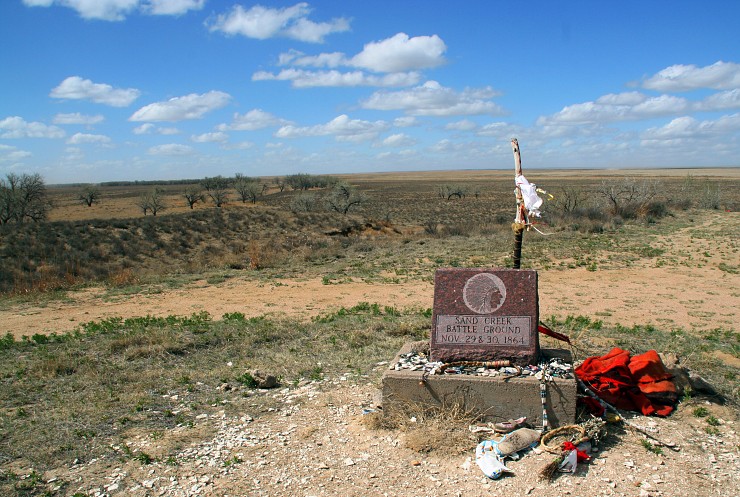Reflection from Day 1 at the Rocky Mountain Annual Conference UMC session in Pueblo, CO.
For a look at the focus of this year’s conference on the 150th anniversary of the Sand Creek Massacre, click here.
 One of the great privileges of heading to Annual Conference each year is the chance to greet old friends whom I haven’t seen for awhile. I look forward to that reunion—admittedly much more than the conference session itself! Last year I needed to miss the session because of the Black Forest Fire, which led to two families in our church losing their homes and many others being displaced (including my own family for a couple of days of evacuation). It’s good to be back.
One of the great privileges of heading to Annual Conference each year is the chance to greet old friends whom I haven’t seen for awhile. I look forward to that reunion—admittedly much more than the conference session itself! Last year I needed to miss the session because of the Black Forest Fire, which led to two families in our church losing their homes and many others being displaced (including my own family for a couple of days of evacuation). It’s good to be back.
This year the reunion is a little more strained, however. Words like “schism” and “separation” have gone from speculation to seriousness in a short amount of time. In her Episcopal address, Bishop Elaine mentioned a meeting she had this past week at a Village Inn in Monument, CO. Well, I was at that meeting and as a member of the “traditionalist” (for lack of a better term) theological and ecclesial minority in the annual conference, I was grateful for the Bishop’s desire to meet with us and discuss the question, “How can we live together going forward?” I didn’t agree with some of the points she made that day or in her address today, but I’m appreciative that she and many of my colleagues are willing to stay in relationship with those of us who may be on the “other side” of a particular debate. I think that’s what has made this annual conference a great place to serve. I hope that we can find a way to move forward together. As I walked around the halls today, I realized how sad it would be to not continue to see these great friends every year.
What’s exciting to me about this conference session, however, is that we’re focusing on one thing that we can all agree on—the need for peace and reconciliation as we remember the darker events of our Methodist past here in Colorado. My early academic training was in history (yes, being a history major is the equivalent of taking a vow of poverty) and I specialized in 19th century America with most of my research time in the era of the Civil War. The story of the Sand Creek Massacre in 1864 is largely overshadowed in the history books by events in the east that year—the horrific Civil War battles of the Wilderness, Cold Harbor, Spotsylvania, Atlanta, and Petersburg where tens of thousands of American lost their lives, and by the Presidential election where Abraham Lincoln won a solemn victory over former General and peace party activist George McClellan, signaling that the war would continue until the Union was preserved. Sand Creek took place in a faraway territory and was an atrocity committed against people who, at the time, were considered to be non-people by many white Americans, much like the slave population was perceived by many in the South. It wasn’t until George Armstrong Custer and the Seventh Cavalry were defeated by members of the Northern Cheyenne, Sioux, and Arapahoe at Little Bighorn in 1876 (also in the bounds of our Episcopal Area) that the seriousness of the U.S Government’s failure to honor its treaties with native tribes in the West finally struck close to home. The seeds of that famous battle and many more like it were planted at Sand Creek.
The penitent tone of our opening worship this morning was appropriate as we continue the healing journey with our brothers and sisters of these and many other native tribes. These are stories that we need to hear—stories that cut through the brief footnotes in our historical and ecclesiastical education and move us into conversation with real people for whom these events are still vivid in historical memory. When we hear the stories and speak together, we begin to see that there is no such thing as non-people, be they unlike us in race, tribe, culture and tradition (or even unlike us in our theological convictions). We need to travel to the places of our past and remember that while we cannot change what happened, we can change our present and future together with the help of God.
So, I’m looking forward to making some new friends during this conference weekend—friends from among people whose ancestors lived in this land long before I ever arrived here. I want to hear their stories, to stand on the land and experience this living history together.
That’s one place we can go together from here.
Tomorrow’s post will focus on the visit we’ll be taking to the Sand Creek site.



